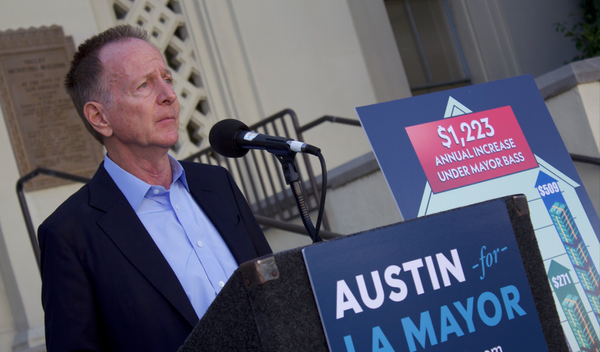
Elon Musk’s risky strategy of piling on one margin-eroding price cut after the other is already paying dividends—by ramping up the pain for Tesla’s competitors.
Ford announced on Tuesday sweeping price cuts for its Mustang Mach-E in the U.S. market, where the crossover was the bestselling EV last year not built by Musk.
This makes it the second time it has followed Tesla’s lead since the start of the year.
The Detroit incumbent knocked off $3,000 from the base version, a cut of 6.5%, reducing its list price to $42,995.
It went even further with the top-of-the-line GT Extended Range nameplate, slashing that by $4,000 to $59,995; at the start of the year, this car still cost nearly $10,000 more.
Unfortunately for Ford CEO Jim Farley, his business cannot exactly afford it.
First-quarter results published after the closing bell revealed ballooning losses at its EV division, dubbed “Model e,” on the back of spiraling costs.
The $700 million deficit was so deep red the business actually managed to breach the ignominious mark of a negative 100% margin.
That means that for each dollar in revenue Model e generated during the quarter through the sale of an EV, its operating loss went up by an equivalent amount.
It was always expected that traditional car companies, lagging far behind Tesla, would not be profitable in the EV space anytime soon.
But Ford's Model e quarterly financials were truly dire. By comparison, Tesla's operating profits weighed in at an extremely robust 11.4% return for the period despite heavily discounting its models this year.
This allows Musk to further dial up the pain without swinging to a loss.
Late last month Tesla said it viewed this year as a unique opportunity to prey on incumbents like Ford through what now has become five straight price cuts since January.
“As many carmakers are working through challenges with the unit economics of their EV programs, we aim to leverage our position as a cost leader,” it said.
A race to the bottom where Tesla would be the last man standing, in other words.
Musk has come under fire from investors for warning on the April 19 earnings call he might even be prepared to accept zero profit per vehicle sold. That is because he believes Tesla can recoup the lost earnings and then some with the sale of software like its Full Self-Driving feature, a $15,000 optional add-on that can be downloaded from the cloud—provided of course that it one day solves autonomous driving.
Poor economics per vehicle sold
“Tesla has triggered a price war in EVs that will have industrywide consequences: Legacy OEMs [original equipment manufacturers] will have to follow, but with higher cost structures,“ UBS wrote ahead of Ford’s earnings on Tuesday, designating Tesla and Ford as one of its top and bottom picks in the sector, respectively.
To prepare investors for the pain yet to come, Ford has attempted to portray Model e as a kind of tech startup, tasking it, for example, with building up a suite of vehicle-embedded software services to bolster its argument.
So it came as little surprise when the carmaker revealed in March for the first time that the new division suffered a $2.1 billion loss for 2022 and forecast this would widen to $3 billion this year.
As part of a presentation on its new financial reporting structure, it pledged to turn around the business and position it to achieve an 8% operating margin starting in 2027, versus the whopping 40% negative margin Model e reported for the last one.
Typically the best way for Ford to improve its EV results in the face of headwinds such as sweeping price cuts is through higher volume.
Regardless of powertrain technology, the fixed-cost-heavy car business is all about scale—the more units of a particular model you sell, the faster profit growth should accelerate, a term generally referred to as operating leverage.
Yet Ford’s EV lineup currently suffers from one major problem that throws a serious monkey wrench into that equation.
Its variable costs, such as the raw materials like steel used to build a car, actually exceed the overall revenue generated with each electric vehicle it sells at present.
As a result of this negative “contribution margin,” its losses actually worsen the more Mustang Mach-Es and F-150 Lightnings that Ford delivers to customers.
These poor unit economics that Tesla alluded to late last month means Ford is in effect buying market share at a steep cost to its income statement.
Speaking to investors on Tuesday, Ford boss Farley held out hope this wouldn’t remain the case much longer even if overall losses at Model e continue, owing to investment in the business.
“We’re on track this year toward a contribution margin approaching breakeven in the Model e,” the CEO said.







